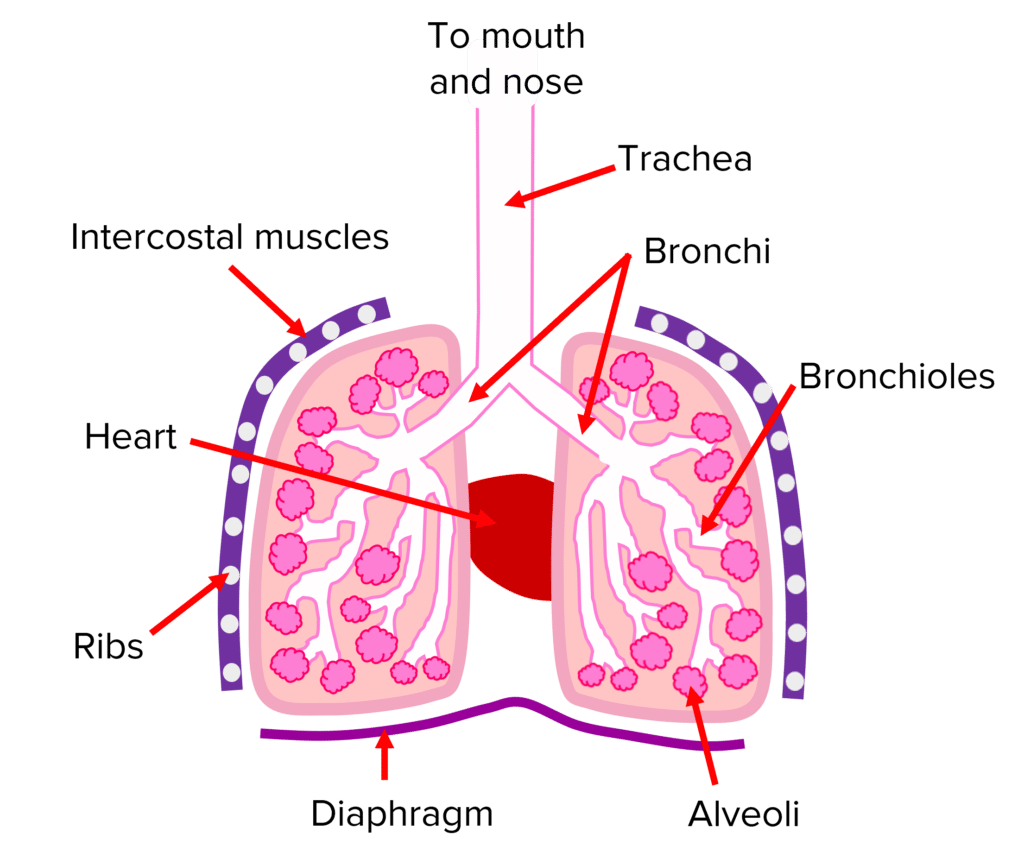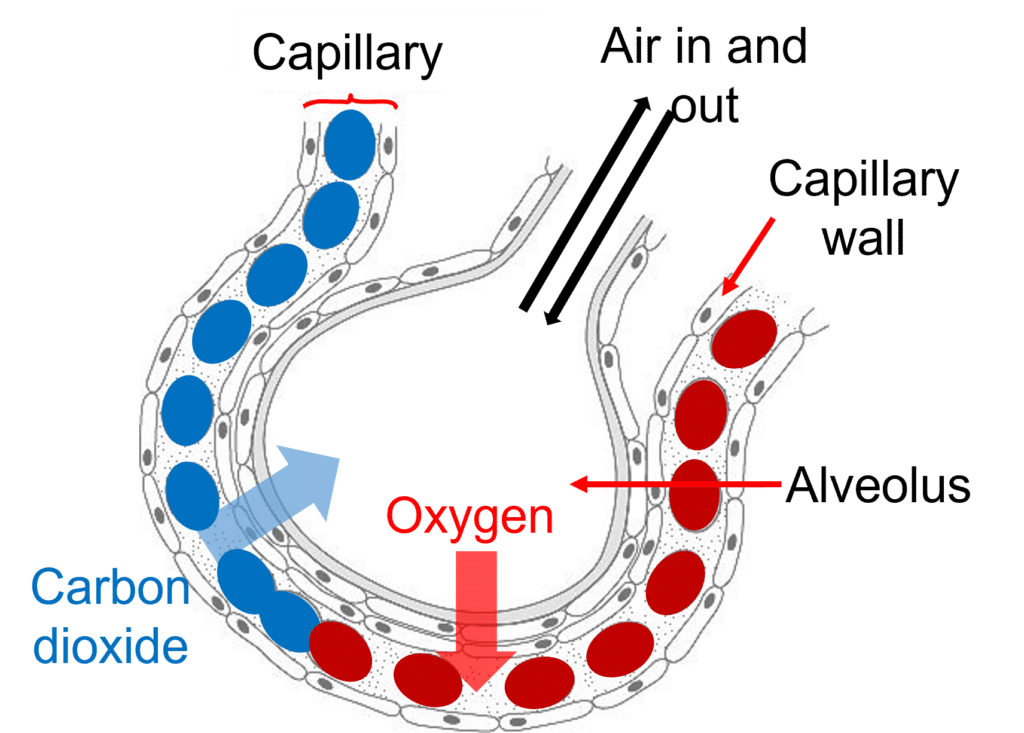The Lungs
The Lungs Revision
The Lungs
The lungs are responsible for gas exchange in humans. Oxygen is taken in from the air and transported to respiring cells that use it to produce energy. Carbon dioxide, produced as a waste product from respiration, is released back into the atmosphere. The lungs are structured in a way that provides efficient exchange of these gases.
Structure of the Lungs

Air enters the body through the mouth and nose and travels down the trachea to the lungs. The trachea splits into two bronchi that go into each lung. Each bronchus branches out into bronchioles that end in little air sacs called alveoli. Alveoli are the exchange surface for gases in and out of the body.
The lungs are located in the thorax, separated from the rest of the body by the diaphragm. They are surrounded by pleural membranes and encased in the rib cage with the heart for protection. The contraction and relaxation of the intercostal muscles and the diaphragm causes ventilation.
Ventilation
Ventilation is the movement of air in and out of the lungs and enables large volumes of gas to be exchanged. Ventilation occurs due to the contraction and relaxation of certain muscles.
| Inhalation: | Exhalation: |
|
|
Gas Exchange in the Alveoli
The alveoli are highly adapted for efficient diffusion of oxygen and carbon dioxide between the air and the blood (see exchange surfaces for more information).

Deoxygenated blood is pumped to the the lungs to be oxygenated, by the heart. It contains lots of carbon dioxide and very little oxygen because it has been supplying oxygen to respiring cells around the body and receiving their waste carbon dioxide.
The alveoli contains air that has a high concentration of oxygen and a low concentration of carbon dioxide. Oxygen will therefore diffuse into the blood and carbon dioxide will diffuse out of the blood, down the concentration gradients.
Now the blood is oxygenated, it returns to the heart so it can be pumped around the body to respiring cells.
The concentration of oxygen in the blood is now greater than in the respiring cells so oxygen diffuses into the cells for more respiration. Carbon dioxide is produced as a waste product of respiration so the concentration in the respiring cells is much higher than in the blood. Carbon dioxide therefore moves into the blood by diffusion, down the concentration gradient.
The blood is deoxygenated again so the cycle repeats.
The Lungs Example Questions
Question 1: Describe the path that air takes when it is inhaled into the lungs for gas exchange.
[4 marks]
The air enters through the mouth and nose and travels down the trachea.
The trachea splits into two bronchi.
Bronchi branch into bronchioles.
It ends in the alveoli where the gas exchange takes place.
Question 2: Explain the process of exhalation.
[3 marks]
The external intercostal muscles relax, pulling the ribcage down and in.
The diaphragm relaxes and moves upwards.
This decreases the pressure and volume of the thorax so air is pushed out of the lungs.
Question 3: Explain how oxygen and carbon dioxide are exchanged in the alveoli.
[4 marks]
The concentration of carbon dioxide is greater in the blood surrounding the alveoli than in the air.
Carbon dioxide therefore diffuses down the concentration gradient, into the air in the alveoli.
The concentration of oxygen is lower in the blood surrounding the alveoli than in the air.
Oxygen diffuses down the concentration gradient, into the blood.

MME Premium Membership
£19.99
/monthLearn an entire GCSE course for maths, English and science on the most comprehensive online learning platform. With revision explainer videos & notes, practice questions, topic tests and full mock exams for each topic on every course, it’s easy to Learn and Revise with the MME Learning Portal.
Sign Up Now



